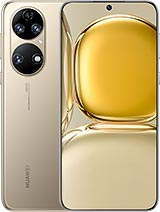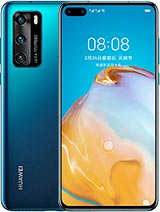Huawei P40 Pro+ camera review By GSMArena Official
Hey, what's up guys will here for GSM, marina, the Huawei P 40 pro is already one of the most powerful camera phones. You can buy these days, but if that's just not enough, there's another that may be just right for you, the Huawei P 40 pro plus, it goes even further, literally with his 10 times. Optical zoom. Can, let's see what it's capable of in our dedicated camera review as a smartphone. The p40 pro plus is basically the same Mississippi 40 pro the specs have hardly changed as you'd expect from a thousand plus dollar device. You get some of the most premium features you can buy.
These include a curved high refresh rate OLED screen a flagship grade: caret 995, G, chipset, ip68, waterproofing and fast charging, and, yes, you are required to use hallways mobile services over Google's here. One difference you will find from the p40 pro is that the back here is made of ceramic, not glass and aluminum, and you get faster 40 watt wireless charging with the proprietary charging pad. The main difference, however, is in the cameras you get five here instead of four, including an 8 megapixel. Periscope telephoto cam that can achieve 10 times, optical zoom and another 8 megapixel one with 3 times optical zoom. Besides the zoom lenses, the other cameras are the same, at least on paper.
There's a 50 megapixel quad bear main cam a 40 megapixel ultra-wide cam with autofocus and a TOF depth sensor. Overall, this setup gives you some incredible versatility when shooting, and you can zoom even farther now than you could, with the p40 pro without a loss in quality. There is something confusing going on here, though. The main camera is 23, millimeters that it actually crops to act as a 27 millimeter lens, so to provide a 10 times zoom, you should have a focal length of 270 millimeters. The periscope lens is actually 240, so it gets there through cropping generally.
Whatever photos you take will involve some sort of cropping and upscaling to get the cameras to match up. You can see it happening right on the viewfinder to the phone switches cameras in a different spot than the specified zoom modes. The main cameras actual focal length is really at around 0.85 times in the periscope camera kicks in. At around eight point five times, however, it's all seamless and the upscaling doesn't have a big effect on the quality speaking of quality, let's get into it, starting with the main cam is photos come out in 12.5 megapixels, and they are excellent. There's plenty of resolve detail even in complex areas, no visible noise, lively, colors and stellar dynamic range plus the sharpening is just right.
There is a high-res mode that shoots in the full 50 megapixel resolution. Please take just a second to capture and have a wider field of view than the regular photos, because there's no cropping may have better detailed and expected to, but keep in mind that these take up much more space and the cropped corners are quite soft. Portraits are shot with the main camera and the TOF sensor. They have very balanced skin tones and good sharpness. The subject separation is very proficient -.
These are some of the best portraits we've gotten out of a phone. Next, the ultra-wide camera, its output isn't quite as wide as some competitors, but as 10 megapixel photos are class. Leading the dynamic range is impressive. The colors are accurate. There are no soft corners or warped buildings, and the resolved detail is extraordinary.
The sharpening is a bit excessive, but these are still among the best ultra-wide photos. We've seen since the ultra-wide has autofocused it's possible to take some close-up shots with it. It's not really a macro cam, since the closest you can get us around 8 centimeters, but these are quite nice. Nonetheless, now, let's see what the 3 x, telephoto cam can do. As we've said before, with hallway camera phones, nothing is ever what it seems and all cameras have their quirks like insisting on saving 12.5 megapixel photos out of the 8 megapixel sensor, regardless. These photos are very good with accurate, colors, Westerman sharpness and nice dynamic range.
And finally, we get to the real gem of this camera phone. The 10 times optical zoom, provides excellent image. Quality. There's plenty of detail, accurate, colors and perfect dynamic range. This level of clarity at this zoom level was unheard of until very recently, while you can see the effects of the cropping and upscaling it's not so bad.
But if you want to avoid this entirely, you can get the native field of view by zooming out to 8.5 x, resulting in a photo. That's a little sharper now on to low-light photography. Shots taken with the main camera are simply stunning. We have a great level of detail: balanced exposure, good colors, very low noise and perfect sharpness. If you turn on night mode, you get more detail revealed in the shadows, but there's no change in the already excellent highlights.
As far as detail or noise go, we don't see any benefit here. We even had some photos come out softer and each shot takes a few seconds to process. It's not really worth using night mode for the main cam unless it's pitch black outside shots from the ultra-wide cam are just great they're, sharp, detailed and noise free with nice colors. We really liked all the samples we shot. Night mode is available here too, but there's an even stronger case against using it than with the main camp.
You do get a brighter exposure, but these are cropped to a four by three frames and up scaled to twelve point. Five megapixels, resulting in a loss of quality and each shot requires up to eight seconds of holding the phone steady three times, zoom shots we took at night turned out to be most often just a crop and upscale from the main camera. These are still good, but you get the loss in quality from upscale. If the telephoto camera does kick in, you'll, get a darker photo with similar or even less detail. Turning on night mode at three times, zoom results in either a loss of a lot of detail.
If it's one of the main cameras, crops or a well lit yet very noisy photo from the telephoto camp ten times, Zoom will almost always use the periscope camera in low-light. These are quite usable photos, they're, dark, but sharpness is decent and there is good detail. Turning on night mode here, works wonders it takes again about eight seconds. In a steady hand, but it brightens up the whole picture and improves detail by a lot. The p40 Pro Plus is selfie.
Camera has a 32 megapixel sensor, and it has autofocus there's also a secondary TOF sensor for portraits selfie quality is very good with enough detail and excellent contrast. Colors are nice and dynamic range is really what we think the TOF set up is actually helpful in selfie portrait mode subject. Separation is really great here. You can shoot selfie video in 4k resolution, and these are really nice. The clips are detailed with good colors contrast and dynamic range continuing with video.
You can shoot in up to 4k at 60fps, with either the main or the telephoto camera, and up to 4k at 30fps with the zoom canons. Footage from the main camera is very good, with excellent contrast. Mostly accurate, colors and wide dynamic range detail is really nice in 30 FPS mode, but we did notice a drop in sharpness at 60. Fps 4k videos from the ultra-wide camera aren't as detailed, but the contrast and dynamic range are still great.4K clips from either of the telephoto cameras are pretty nice, with good contrast and wide dynamic range. They are a bit soft, though perhaps due to the relatively low 8 megapixel native resolution of these sensors.
Always an is video. Stabilization is available at all times in all modes. On top of the IS Andy is already available. It does a great job of smoothing out footage, though there is no option to turn the AIS off. Finally, let's have a look at video quality at night.
Quality from the main camera is great, with even exposure. Good sharpness, no visible noise and well-preserved highlights nighttime clips from the ultra-wide camera are not so impressive, especially when you consider that it's marketed for his video capabilities. The output is still nice for an ultra-wide shooter, though so there you have it guys. Overall, the cameras are the p40 Pro. Plus are awesome.
A lot of phones have multiple cameras which aren't that great and feel like they're there for the sake of a spec sheet. Not here, though, each of these feels like it's a worthy member of a great and versatile camera setup. For example, at the portraits and the ultra-wide shots, or maybe the best we've seen from a camera phone yet in the 10 times, Zoom is definitely worthwhile to have its lets you take photos that wouldn't be possible on their regular p40 pro. Our only real nitpick is at the camera focal lengths don't match the zoom levels, so everything involves some extra processing behind the scenes, but the user experience is seamless, and the final result looks great and that's what matters right. If you're looking for one of the best camera phones, you can buy the Huawei p40 Pro Plus definitely deserves a recommendation.
Thanks for watching guys, stay safe and see you on the next one. You.
Source : GSMArena Official


























